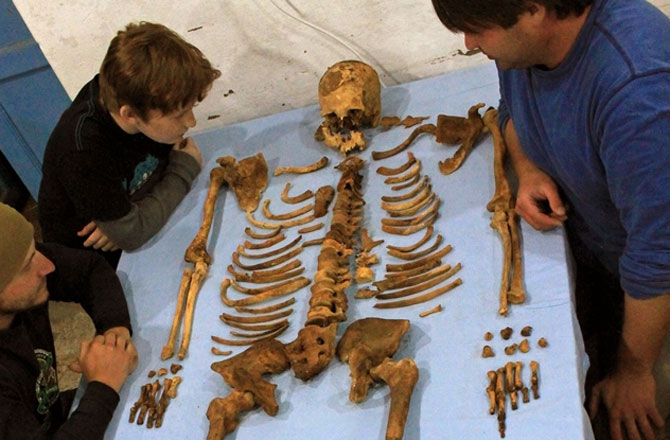A mysterious pyramid-shaped flight of stairs dating to the time of Jesus, has been unearthed in ancient Jerusalem, the Israel Antiquities Authority (IAA) announced.
Made from large ashlar — or finely cut — stones, the 2,000-year-old stepped structure leads to a podium.
The puzzling staircase was found alongside a stepped street that once led Jewish pilgrims from the rock cut Pool of Siloama on the southern slope of the City of David to the Second Temple which stood atop the Temple Mount.
Mysterious Message Found in 2000-Year-Old Ritual Bath in Jerusalem
Consisting of enormous stone slabs, the street was built sometime in the fourth decade of the 1st century A.D. and was one of the largest construction projects undertaken in Jerusalem during the Second Temple period.
The Second temple era, running from 538 B.C. to 70 A.D., refers to the lifetime of the temple built by King Herod the Great to replace the First Temple, razed by the Babylonians around 587 B.C.
In 70 A.D., the Second Temple also vanished as the Romans sacked the city and plundered Herod’s magnificent white and gold temple. Then they paraded the treasure, which also helped finance the building of the Colosseum, through the streets of Rome in triumph.
Ancient Aqueduct Unearthed In Jerusalem
Archaeologists do not know yet what the pyramid-shaped staircase was used for. Rabbinic texts refer to stone platforms used for auctions or as “Stone of Claims” to find lost belongings, but nothing like that structure has been found in Jerusalem or elsewhere in ancient Israel.
“Given the lack of a clear archaeological parallel to the stepped-structure, the purpose of the staircase remains a mystery,” archaeologists Nahshon Szanton and Joe Uziel said in a statement.
Intriguingly, dozens of whole pottery vessels, stone vessels and glassware were found at its foot.
Since the structure is built along the street in a place that is clearly visible from afar by passers-by making their way to the Temple, the archaeologist speculate it was a kind of monumental podium that attracted the public’s attention when walking on the city’s main street.
“It would be very interesting to know what was said there 2,000 years ago. Were messages announced here on behalf of the government? Perhaps news or gossip, or admonitions and street preaching – unfortunately we do not know,” Szanton and Uziel said.











